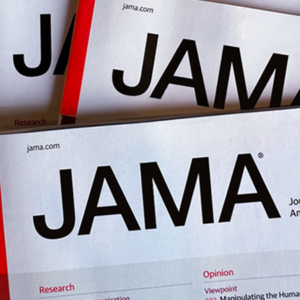פוסט זה זמין גם ב:
עברית
 Amanda B. Witte, MD1; Kyle Van Arendonk, MD, PhD2; Carisa Bergner, PhD1; et alMartin Bantchev, MS1; Richard A. Falcone Jr, MD, MPH, MMM3; Suzanne Moody, MPA, CCRP3; Heather A. Hartman, MD4; Emily Evans, MS4; Rajan Thakkar, MD2; Kelli N. Patterson, DO, MS, MPH2; Peter C. Minneci, MD, MHSc5; Grace Z. Mak, MD6; Mark B. Slidell, MD7; MacKenton Johnson, BS6; Matthew P. Landman, MD, MPH8; Troy A. Markel, MD8; Charles M. Leys, MD9; Linda Cherney Stafford, MPH9; Jessica Draper, DNP, APRN9; David S. Foley, MD10; Cynthia Downard, MD10; Tracy M. Skaggs, APRN10; Dave R. Lal, MD, MPH1; David Gourlay, MD1; Peter F. Ehrlich, MD, MSc4
Amanda B. Witte, MD1; Kyle Van Arendonk, MD, PhD2; Carisa Bergner, PhD1; et alMartin Bantchev, MS1; Richard A. Falcone Jr, MD, MPH, MMM3; Suzanne Moody, MPA, CCRP3; Heather A. Hartman, MD4; Emily Evans, MS4; Rajan Thakkar, MD2; Kelli N. Patterson, DO, MS, MPH2; Peter C. Minneci, MD, MHSc5; Grace Z. Mak, MD6; Mark B. Slidell, MD7; MacKenton Johnson, BS6; Matthew P. Landman, MD, MPH8; Troy A. Markel, MD8; Charles M. Leys, MD9; Linda Cherney Stafford, MPH9; Jessica Draper, DNP, APRN9; David S. Foley, MD10; Cynthia Downard, MD10; Tracy M. Skaggs, APRN10; Dave R. Lal, MD, MPH1; David Gourlay, MD1; Peter F. Ehrlich, MD, MSc4Key Points
Question Does the application of high-risk guidelines allow for safe and appropriate administration of venous thromboembolism (VTE) prophylaxis following pediatric trauma?
Findings In this cohort study applying high-risk criteria to guide VTE prophylaxis, more than half of patients received prophylaxis without any documented bleeding complications. Increased time to prophylaxis initiation was significantly associated with increased likelihood of developing VTE.
Meaning Use of VTE prophylaxis in high-risk pediatric trauma patients is safe, and further studies may focus on timing of prophylaxis and barriers to implementation of guidelines.
Importance The indications, safety, and efficacy of chemical venous thromboembolism prophylaxis (cVTE) in pediatric trauma patients remain unclear. A set of high-risk criteria to guide cVTE use was recently recommended; however, these criteria have not been evaluated prospectively.
Objective To examine high-risk criteria and cVTE use in a prospective multi-institutional study of pediatric trauma patients.
Design, Setting, and Participants This cohort study was completed between October 2019 and October 2022 in 8 free-standing pediatric hospitals designated as American College of Surgeons level I pediatric trauma centers. Participants were pediatric trauma patients younger than 18 years who met defined high-risk criteria on admission. It was hypothesized that cVTE would be safe and reduce the incidence of VTE.
Exposures Receipt and timing of chemical VTE prophylaxis.
Main Outcomes and Measures The primary outcome was overall VTE rate stratified by receipt and timing of cVTE. The secondary outcome was safety of cVTE as measured by bleeding or other complications from anticoagulation.
Results Among 460 high-risk pediatric trauma patients, the median (IQR) age was 14.5 years (10.4-16.2 years); 313 patients (68%) were male and 147 female (32%). The median (IQR) Injury Severity Score (ISS) was 23 (16-30), and median (IQR) number of high-risk factors was 3 (2-4). A total of 251 (54.5%) patients received cVTE; 62 (13.5%) received cVTE within 24 hours of admission. Patients who received cVTE after 24 hours had more high-risk factors and higher ISS. The most common reason for delayed cVTE was central nervous system bleed (120 patients; 30.2%). There were 28 VTE events among 25 patients (5.4%). VTE occurred in 1 of 62 patients (1.6%) receiving cVTE within 24 hours, 13 of 189 patients (6.9%) receiving cVTE after 24 hours, and 11 of 209 (5.3%) who had no cVTE (P = .31). Increasing time between admission and cVTE initiation was significantly associated with VTE (odds ratio, 1.01; 95% CI, 1.00-1.01; P = .01). No bleeding complications were observed while patients received cVTE.
Conclusions and Relevance In this prospective study, use of cVTE based on a set of high-risk criteria was safe and did not lead to bleeding complications. Delay to initiation of cVTE was significantly associated with development of VTE. Quality improvement in pediatric VTE prevention may center on timing of prophylaxis and barriers to implementation.






